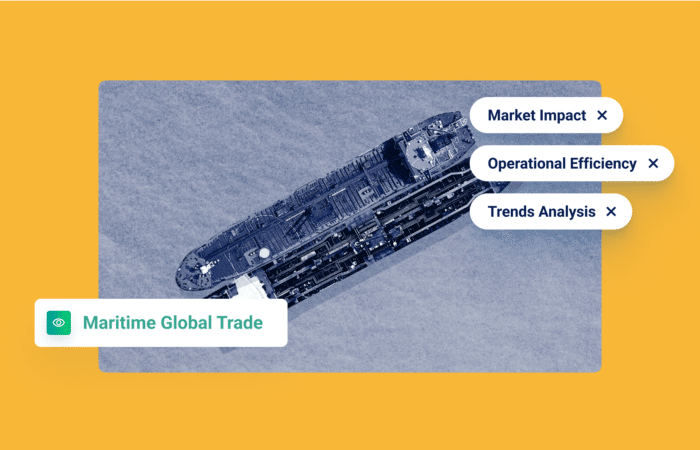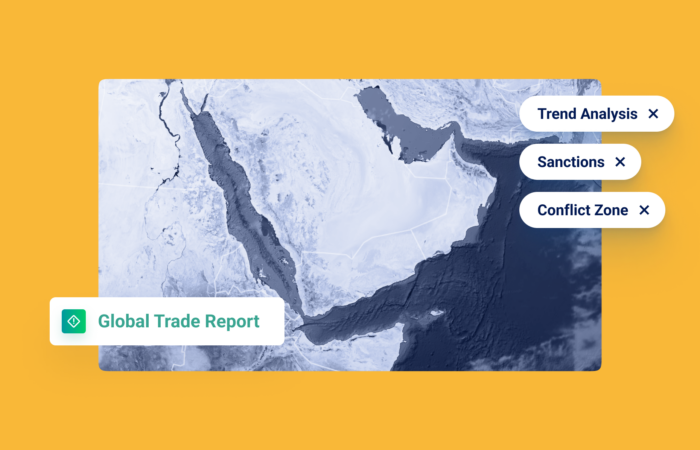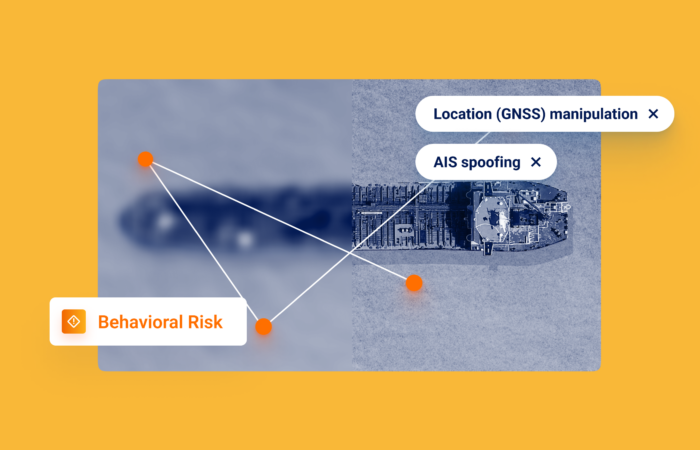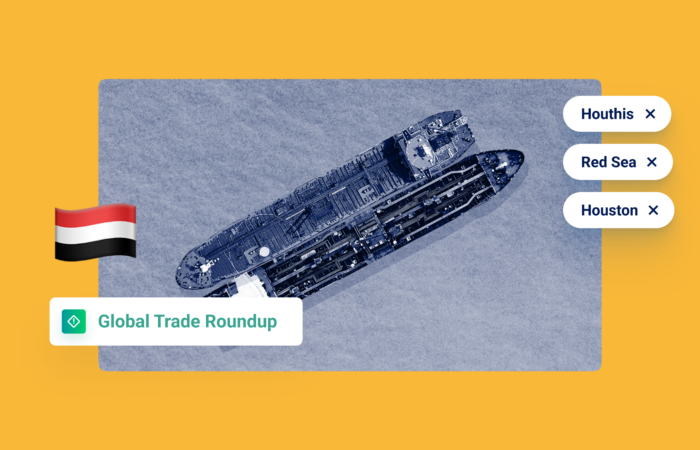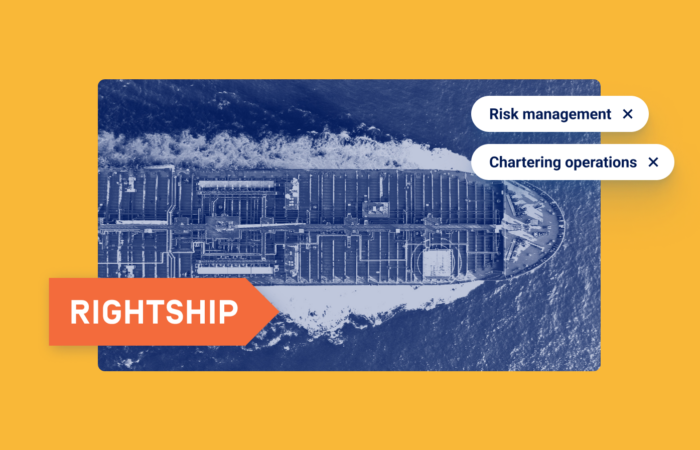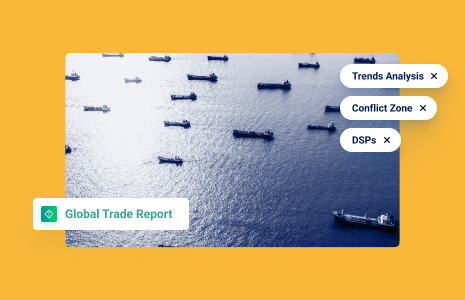What’s inside?
Detecting dark activity or non-transmitting vessels is one of the most persistent challenges for many entities throughout the maritime ecosystem, but it is still possible to overemphasize the search for disabled automatic identification systems (AIS). Focusing on this phenomenon is tempting, because dark activity is detectable with the right technology and it plays on a primal fear: we are scared of things that we cannot see.
The truth is, though, methods have changed. Most bad actors are sophisticated and they do not want to risk losing expensive cargo and ships, or to harm their vessels’ reputation. They understand that as soon as they turn off their AIS for an extended period, they paint a huge target on the side of their ship, so they prefer to hide in plain sight. It’s a classic game of “cat and mouse,” with constantly evolving tactics.
Global navigation satellite system (GNSS) manipulation, ID tampering, vessel identity laundering…bad actors are getting increasingly more sophisticated and the Russia-Ukraine conflict provides extra motivation to engage in tactics that will help evade strict sanctions. For example, while deceptive shipping practices often involved crude oil in the past, we are now seeing it affect dry commodities/bulk trade.
C4ADS, a nonprofit organization with a mission to defeat the illicit networks that threaten global peace and security, released a report last year about the complexities of vessel identity laundering:
“Vessel identity laundering is significantly more sophisticated than previously observed instances of ‘vessel identity tampering,’ in which vessels modify their physical appearance or broadcast false data on AIS transmissions. Given its complexity, vessel identity laundering presents unprecedented challenges for maritime regulators and risks undermining global shipping practices.”
Utilizing Space to Advance the Maritime Ecosystem
The problem for national intelligence, defense, and law enforcement organizations – as well as many others throughout the maritime ecosystem who are required to detect, identify and monitor vessels – is that no approach or technology can serve as a single source of truth, perform all of these functions, and provide a holistic view of risk.
Maritime AITM is the foundation for any effective solution. It transforms a sea of raw data into actionable insights. It is buttressed by technologies such as satellite images, synthetic aperture radar (SAR), radio frequency (RF) detection, and more.
Government agencies, such as border security and intelligence units, benefit from optical satellite technology to detect ships, and search for suspicious maritime activities in near or distant waters. This technology has advanced in recent years.
A few leading companies, such as Planet Labs, built constellations of nano optical satellites that constantly capture images, revolutionizing the traditional tasking model.
Daily optical satellite images from these types of satellites can be delivered seamlessly, without any tasking requirements or exposure. Users can easily access the images and search for vessels, despite the absence of AIS signals, which helps fill data and intelligence gaps. This technology is cost-effective and some vendors even offer a historical library to add context to investigations.
SAR technology has also evolved in recent years. A few private companies sought to address the biggest issues, with radar imaging from space offering images for change detection. SAR images help organizations extend their visibility, as this technology can overcome cloudy areas and nighttime for pre-defined areas.
RF technology passively detects large-scale, multiple frequencies in predefined areas around the globe. The sensors use three different signals to detect activities.
The Whole is Greater than the Sum of its Parts
Despite the great benefits, no single source captures the full picture of what is happening in the fast-paced maritime ecosystem. There are a limited number of sensors, certainly not enough to cover all oceans and everything happening. The sensors that do exist, have specific revisiting times for each area, meaning even covered areas are not covered 24/7. Since there are never enough sensors, by default you are looking backwards on the area you are investigating with no real-time tipping and queuing. These limitations mean that optical satellites and SAR technology are great research tools, but not optimal as maritime domain awareness (MDA) solutions.
Optical images are weather-sensitive and offer a snapshot in time, as opposed to continuous monitoring. SAR is much less cost-effective than optical satellite images and requires knowing exactly when and where they should be tasked in advance. Radio frequency detection only offers restricted coverage with an uncertain radius resolution, and is weather-sensitive. In addition, all three solutions lack coverage and especially context when not used as an extra layer.
The ideal solution takes an innovative AI base and fortifies it with daily satellite and on-demand SAR images, supporting imagery analytics to help detect suspicious objects, and imagery integration. With AI-based MDA platforms and solutions, you can predict where to focus the sensors, bringing tremendous efficiency and value.
A platform-centric, vendor-agnostic approach, empowers users to easily integrate any SAR, RF or optical images, enhance coverage on top of insights and vessel behavior data, and identify illicit actors going beyond AIS disablement to conceal their activities. We’re talking about a single platform that can:
- Detect non-transmitting vessels and dark activities
- Track areas over time to assess changes to coastlines, ports, and open waters
- Investigate operations in areas of interest
- Overlay imagery on a map with a vessel positions and activities layer
- Align image timestamps with vessel positions automatically
The key to success?
“Tipping and queuing are the best approach,” says Matan Peled, the Head of Windward’s U.S. Business. “You will get maximum value by using advanced analytics to decide when and where to focus, and then using remote sensing capabilities accordingly to complete your investigation. Working with a trusted industry advisor can help.”


